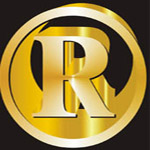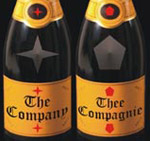Choose a Trademark -
Originality Counts!
You need to choose a trademark that is not only unique to your goods or services, but one that has very strong characteristics and will have the best chance of being accepted for registration - should you wish to do so.
There are some restrictions in law and requirements to qualify for a trademark and you need to choose a trademark with care - you never know when your product will become internationally famous!

NOTE:
Please refer to our main page on Trademarks for an overview and more links
to related information.
Let's take a look at the various ways by which you can further strengthen your mark and its ability to distinguish.
Create a New Word, Logo or Picture for Your Trademark
If you choose a trademark which consists of a made-up name ("fanciful") or word that has no meaning and cannot be found in a dictionary, you will have no difficulty to claim the rights.
Note how very strong trademarks such as KODAK® or GOOGLE ™ had no pre-existing meanings. Similarly, the five interlocking rings is instantly recognizable as the official symbol of the Olympic Games.
Misspelling of a word does not qualify - it still sounds the same and there may still be likelihood of confusion, especially if used in a related field.
You may for example be restricted from using a word such as GAZOOGLE for an internet search engine, but should not have a problem registering GAZOOGLE GAZEBOS (unless it already exists).
Choose a Trademark - Combine Unrelated Words
You may choose a trademark that consists of well-known words, but the way they are combined creates a totally new meaning or association.
If for example you tried to use the words FRESH COFFEE, it will not be accepted because of the restrictions on all other suppliers of fresh coffee. Changing it to FRESHMAN COFFEE could be considered, where FRESHMAN is seen as the distinctive mark.
Even more distinctive would be a made up word such as FRESZOO COFFEE.
An arbitrary word such as apple used with computers is well known as a trademark. LIQUID APPLE will not be distinctive enough for apple juice.
Combine a Word with a Graphic Element for a Distinctive Trademark
A simple graphic element such as a rectangle, circle or cross will not be accepted as a trademark for one company. However, if you combine it with a distinctive name it becomes a new unique trademark design, such as the yellow rectangular outline used by the NATIONAL GEOGRAPHIC CHANNEL.
Most distinctive would be the combination of a unique graphic and made-up word:

Suggestive or Descriptive Trademarks
You may want to choose a trademark that is suggestive of the goods or services that you offer, for example: Rent-a-Copier, Dial-a-Plumber or Fone-4-Pizza. By simply changing the font, color or spelling does not mean it will be able to distinguish from a similar mark and as such will not be accepted for registration.
Descriptive terms are more likely to be used by other traders and is not effective to distinguish your mark from others.
The best way to add the description, is to choose a strong stand-alone mark and then to use it in combination with the descriptive words.
Example: MAXCORPOS Rent-a-Copier
Weak or Unacceptable Trademarks
Anything which may be restrictive to other users:

Laudatory marks:

Generic names such as Aspirin or Linoleum.
Surnames, place names and names consisting of just a few letters fall into a gray area which may not qualify.
Different Meanings - Trademarks in Other Countries or Languages
You may choose a trademark which has a very clear meaning or no meaning in your language or country of use, but may mean something totally different, laughable or even offensive in another country or language. For example MALGAS may sound like a great name for your firelighters, but means "mad gas" or "mad guest" or "badly gas" in other languages.
Doing a search for different meanings is especially important if you wish to market or register in other countries, or use the mark as a domain name.
Once you've decided upon a mark you should at least do a preliminary search for existing trademarks before consulting with trademark attorneys.
You are here:






